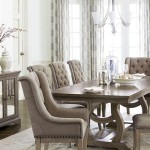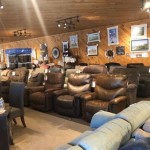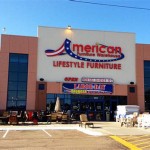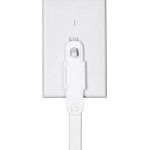Patio Furniture Table Rim Clips: Functionality, Selection, and Maintenance
Patio furniture table rim clips are small, often overlooked components that play a significant role in the structural integrity and aesthetic appeal of outdoor tables. These clips, typically made of metal or durable plastic, serve to secure the table top to the frame, preventing movement, wobbling, and potential damage. Their inconspicuous placement under the table ensures a clean look while contributing significantly to the table's stability and longevity.
The importance of patio furniture table rim clips extends beyond simple fastening. They contribute to the overall safety of the table, especially in windy conditions where a loose tabletop can become a hazard. Furthermore, they protect the table from premature wear and tear by minimizing stress on the frame and tabletop connection points. This article will explore the functionality, selection criteria, and maintenance practices associated with patio furniture table rim clips, providing a comprehensive understanding of these essential components.
Understanding the Functionality of Patio Furniture Table Rim Clips
The primary function of a patio furniture table rim clip is to rigidly connect the tabletop to the table frame. This connection addresses several critical aspects of the table's performance. First, it prevents the tabletop from sliding or shifting, which can be problematic during use, especially when items are placed on the table. This is particularly important for glass tabletops, which can be prone to movement if not securely fastened.
Secondly, the clips help distribute weight evenly across the frame. Without secure clips, the weight of items placed on the table is concentrated at the points where the tabletop rests on the frame, potentially leading to stress fractures or warping over time. By distributing the load, the clips extend the life of both the tabletop and the frame.
Thirdly, the clips contribute to the overall stability of the table. A well-secured tabletop acts as a bracing element, improving the table's resistance to wobbling or tipping. This is particularly important for tables with uneven legs or those placed on surfaces with slight imperfections.
Finally, the clips can play a role in mitigating noise. A loose tabletop can vibrate against the frame, creating annoying rattling sounds, especially in windy conditions. Securely fastened clips minimize these vibrations, resulting in a quieter and more enjoyable outdoor experience. The effectiveness of the clip often depends on the material composition; for example, plastic clips can absorb small amounts of vibration.
Key Considerations for Selecting Patio Furniture Table Rim Clips
Selecting the appropriate patio furniture table rim clips involves considering several factors to ensure compatibility, durability, and performance. These factors include material, size, shape, attachment method, and environmental resistance.
Material: The material of the clip is a crucial determinant of its strength and longevity. Common materials include metal (steel, aluminum, or stainless steel) and plastic (typically high-density polyethylene or polypropylene). Metal clips offer superior strength and resistance to deformation, making them suitable for heavier tabletops and demanding environments. Stainless steel is particularly desirable for its corrosion resistance. Plastic clips, while generally less strong, are more resistant to rust and can offer some degree of flexibility, which can be beneficial in absorbing minor vibrations. The choice between metal and plastic depends on the specific application and the weight and material of the tabletop.
Size: The size of the clip must be compatible with the thickness of the tabletop and the dimensions of the table frame. The clip should be sized to provide a snug and secure fit without being so tight that it causes stress on the tabletop or frame. Measure the tabletop thickness carefully and consult the manufacturer's specifications to ensure proper fitment. The overall length and width of the clip should also be considered to ensure it does not interfere with the legs or other structural components of the table.
Shape: Rim clips come in various shapes, including L-shaped, Z-shaped, and U-shaped. The appropriate shape depends on the design of the table and the location where the clip will be attached. L-shaped clips are commonly used to secure the edge of the tabletop to the inner frame. Z-shaped clips are designed to accommodate tables with a lip or overhang. U-shaped clips are often used to secure a tabletop to a tubular frame. Select the shape that provides the most secure and unobtrusive attachment.
Attachment Method: The method of attachment is another critical consideration. Some clips are designed to be screwed into the tabletop and frame, providing a very secure connection. Others utilize a snap-fit or friction-fit design, which allows for easier installation and removal. Screw-in clips are generally preferred for heavier tabletops or tables that will be subjected to frequent use. Snap-fit or friction-fit clips are suitable for lighter tabletops or tables that may need to be disassembled for storage or transportation. When using screw-in clips, ensure that the screws are of the appropriate length to avoid piercing through the tabletop or frame. Also, pre-drilling pilot holes can prevent splitting of wood or cracking of plastic.
Environmental Resistance: Patio furniture is exposed to the elements, so it is essential to choose clips that are resistant to corrosion, UV degradation, and temperature extremes. Stainless steel and UV-stabilized plastics are excellent choices for outdoor applications. Avoid clips made of materials that are prone to rusting or becoming brittle in sunlight. Consider the climate in which the table will be used and select clips that can withstand the local weather conditions. For example, in coastal areas, stainless steel is almost mandatory to prevent corrosion from saltwater.
Maintenance and Replacement of Patio Furniture Table Rim Clips
Proper maintenance of patio furniture table rim clips is essential for ensuring their continued effectiveness and extending the life of the table. Regular inspection and timely replacement of damaged or worn clips can prevent more serious problems.
Inspection: Inspect the clips regularly, especially after periods of heavy use or exposure to harsh weather conditions. Look for signs of corrosion, cracking, bending, or loosening. Pay particular attention to the areas where the clips are attached to the tabletop and frame, as these areas are subject to the most stress. Check for loose screws or worn snap-fit mechanisms. A visual inspection can quickly identify potential issues.
Cleaning: Clean the clips periodically to remove dirt, debris, and other contaminants. For metal clips, use a mild soap and water solution and a soft brush. Avoid using abrasive cleaners, as they can scratch the surface and accelerate corrosion. For plastic clips, use a similar cleaning solution. Rinse thoroughly with clean water and allow the clips to dry completely before reassembling the table. Cleaning helps maintain the integrity of the clip material and prevents the build-up of substances that can cause degradation.
Tightening: If the clips are secured with screws, check the screws periodically and tighten them as needed. Loose screws can cause the tabletop to become unstable and can eventually lead to the clips failing. Use a screwdriver that is appropriately sized for the screws to avoid stripping the heads. Avoid over-tightening the screws, as this can damage the tabletop or frame. If the screws are stripped or damaged, replace them with new screws of the same size and type.
Replacement: Replace any clips that are damaged, worn, or corroded. Replacing clips promptly can prevent the problem from escalating and causing further damage to the table. When replacing clips, use clips that are of the same type and size as the original clips. Consult the manufacturer's specifications or measure the existing clips to ensure proper fitment. Replacing all the clips at once, rather than just the damaged ones, can ensure uniform performance and prevent one clip from bearing an undue share of the load.
Storage: Store patio furniture in a dry, sheltered location during the off-season to minimize exposure to the elements. If the furniture must be stored outdoors, cover it with a waterproof furniture cover. Before storing the furniture, inspect all the clips and replace any that are damaged or worn. Consider disassembling the table for storage, especially if it is large or bulky. Store the clips in a separate container to prevent them from getting lost or damaged. Proper storage can significantly extend the life of the clips and the entire table.
By understanding the functionality, selection criteria, and maintenance practices associated with patio furniture table rim clips, one can ensure the stability, safety, and longevity of outdoor tables. These seemingly small components play a vital role in the overall performance and enjoyment of patio furniture.

Table Rim Clip Large Patio Furniture Supplies

Table Rim Clip Small Patio Furniture Supplies

10 Pack Table Rim Clips Nylon Patio Furniture Repair 1 23 034 Or 575 Lengt Ebay

1 575 X 0 760 Table Rim Clip Buy Chair Slings

Table Rim Clip The Perfect Solution For Patio Furniture Maintenance And Repair Hauser S

10 Table Rim Nylon Patio Furniture Clips 1 4 Ebay

Tropitone Table Rim Clip Patio Furniture Supplies

Goodszone 10 Pack Table Rim Clips Nylon Patio Furniture Repair 1

Table Rim Clip Tropitone Outdoor Furniture Replacement Parts

Enhance Your Patio Furniture Stability With Hauser S Table Rim Attachment Clip Black
See Also








